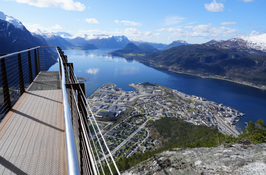Raghu Kuvempunagar
Member
Some thoughts by Gueorgui Pinkhassov which could be relevant in this context:
"a thought crossed my mind: perhaps in photography, there is no such thing as composition. Perhaps there is, instead, a decisive point in space—just like Cartier-Bresson’s decisive moment in time. If the decisive moment masters time, then the decisive point governs space. And the photographer’s role is to find it—through the lens—and react in that fleeting instant. In painting, the ancestor of photography, you arrange the elements to create composition. In photography, to remain faithful to the flow of life, you seek that elusive point."

 www.facebook.com
www.facebook.com
"a thought crossed my mind: perhaps in photography, there is no such thing as composition. Perhaps there is, instead, a decisive point in space—just like Cartier-Bresson’s decisive moment in time. If the decisive moment masters time, then the decisive point governs space. And the photographer’s role is to find it—through the lens—and react in that fleeting instant. In painting, the ancestor of photography, you arrange the elements to create composition. In photography, to remain faithful to the flow of life, you seek that elusive point."

Gueorgui Pinkhassov
Sebastião Undeniably, Sebastião Salgado is a remarkable photographer. But that’s not what this is about. Back in 1987, Cristina—the secretary of Robert Delpire, then director of the National Center...
 www.facebook.com
www.facebook.com








 Seriously though...sometimes you just have to push through. I was in Norway in April. I am not wild about heights, (like the looking down part)...and it can kind of wear on me. Nevertheless, sometimes you just have to push your envelope and make it a little bigger. This is Rampestreken...a steep hike in Andalsnes. This is the Ramp(e) that juts out over a steep drop. The floor at the end is a grate so you can look straight down when you are at the end of the ramp. Well...I got this far.
Seriously though...sometimes you just have to push through. I was in Norway in April. I am not wild about heights, (like the looking down part)...and it can kind of wear on me. Nevertheless, sometimes you just have to push your envelope and make it a little bigger. This is Rampestreken...a steep hike in Andalsnes. This is the Ramp(e) that juts out over a steep drop. The floor at the end is a grate so you can look straight down when you are at the end of the ramp. Well...I got this far. . Then continued another 200m up (steep) to the gondola. In hindsight I probably could have gone out on the ramp a bit more...next time. PS: Prekestolen was a few days later...there were some kind of scary parts but I figured that if little kids and small dogs could do it I could too. You can do it.
. Then continued another 200m up (steep) to the gondola. In hindsight I probably could have gone out on the ramp a bit more...next time. PS: Prekestolen was a few days later...there were some kind of scary parts but I figured that if little kids and small dogs could do it I could too. You can do it.

 Maybe that's what it's about: what I like is to take a random every day scene and find that little off that stands out...but if there's too much weirdness, there's not much to counteract it and make it "manageable"....hmmm....yet, I like challenges and the possibilities they bring!
Maybe that's what it's about: what I like is to take a random every day scene and find that little off that stands out...but if there's too much weirdness, there's not much to counteract it and make it "manageable"....hmmm....yet, I like challenges and the possibilities they bring!
